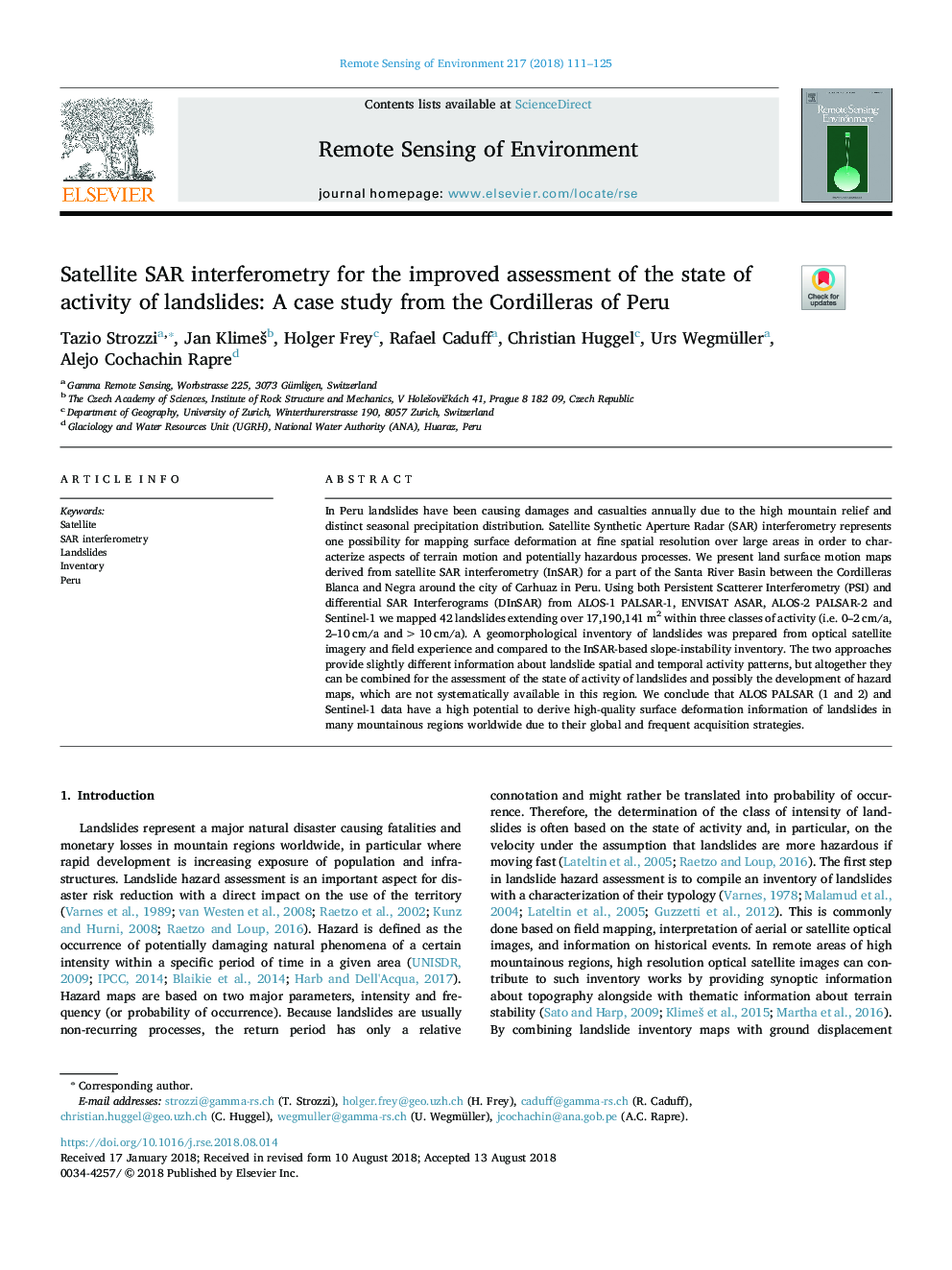| Article ID | Journal | Published Year | Pages | File Type |
|---|---|---|---|---|
| 10113958 | Remote Sensing of Environment | 2018 | 15 Pages |
Abstract
In Peru landslides have been causing damages and casualties annually due to the high mountain relief and distinct seasonal precipitation distribution. Satellite Synthetic Aperture Radar (SAR) interferometry represents one possibility for mapping surface deformation at fine spatial resolution over large areas in order to characterize aspects of terrain motion and potentially hazardous processes. We present land surface motion maps derived from satellite SAR interferometry (InSAR) for a part of the Santa River Basin between the Cordilleras Blanca and Negra around the city of Carhuaz in Peru. Using both Persistent Scatterer Interferometry (PSI) and differential SAR Interferograms (DInSAR) from ALOS-1 PALSAR-1, ENVISAT ASAR, ALOS-2 PALSAR-2 and Sentinel-1 we mapped 42 landslides extending over 17,190,141â¯m2 within three classes of activity (i.e. 0-2â¯cm/a, 2-10â¯cm/a and >10â¯cm/a). A geomorphological inventory of landslides was prepared from optical satellite imagery and field experience and compared to the InSAR-based slope-instability inventory. The two approaches provide slightly different information about landslide spatial and temporal activity patterns, but altogether they can be combined for the assessment of the state of activity of landslides and possibly the development of hazard maps, which are not systematically available in this region. We conclude that ALOS PALSAR (1 and 2) and Sentinel-1 data have a high potential to derive high-quality surface deformation information of landslides in many mountainous regions worldwide due to their global and frequent acquisition strategies.
Related Topics
Physical Sciences and Engineering
Earth and Planetary Sciences
Computers in Earth Sciences
Authors
Tazio Strozzi, Jan KlimeÅ¡, Holger Frey, Rafael Caduff, Christian Huggel, Urs Wegmüller, Alejo Cochachin Rapre,
